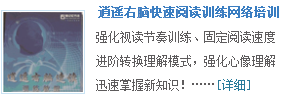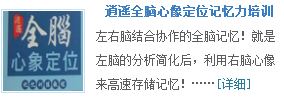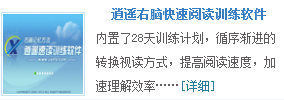全名:Adolf Frederick Johann Butenandt
德国化学家。1903年3月24日生于不来梅港的莱赫(现在的威悉蒙德)。 布特南特在马尔堡大学学习,其后在格廷根大学温道斯的指导下工作,并于1927年获得哲学博士学位。三年之后他是那里的有机化学实验室主任。 布特南特突出的工作是分离性激素和鉴定其结构。第一个被分离出来的性激素是雌酮,这是布特南特在1929年从怀孕妇女的尿中得到的。它是卵巢细胞分泌出来的少量几种物质之一,这些物质是促进妇女性成熟的。1931年布特南特分离出雄性甾酮,这是睾丸细胞产生的一种重要的男性激素,它对男人所起的作用如同雌酮对妇女所起的作用一样。布特南特只用了15毫克的雄性甾酮,由于采用了普莱格尔所用的微量分析法,得以对这些元素作了两次分析,而且还制出这个化合物的一种变体并分析了它。这足以使布特南特有可能推导出这个化合物的分子式。1934年卢齐契加根据布特南特的结构见解合成了一种类似的化合物,发现合成的产物完全具有雄性甾酮的性质,因此证实布特南特的探索工作是正确的。1934年布特南特分离了另外一种对于妊娠过程中的化学机理具有十分重要作用的女性激素---孕甾酮。1936年布特南特担任柏林威廉皇家生物化学研究所所长,1939年他与卢齐卡(Leopold Ruzicka 1887?1976)分享了诺贝尔化学奖。如同那年另一位德国人多马克以及一年前库恩得到诺贝尔奖时的情况一样,纳粹政府强迫布特南特拒绝接受这笔奖金。直到第二次世界大战结束和希特勒完蛋后,他才于1949年接受了这一荣誉。战后他在图宾根大学任教,1956年之后在慕尼黑大学教书。1960年他继哈恩之后任马克斯?普朗克学会主席。
英文介绍
Adolf Frederick Johann Butenandt was born on March 24, 1903 at Bremerhaven-Wesermünde. The son of a business man Otto Butenandt of Hamburg, he went to school at Bremerhaven and studied chemistry at the Universities of Marburg and Göttingen. In 1927 he graduated at the University of Göttingen, where he had studied under Adolf Windaus.
From 1927 until 1930 he was Scientific Assistant at the Institute of Chemistry, Göttingen, and from 1931 until 1933 he was Privatdozent in the Department of Biological Chemistry at the University of Göttingen and acting Head of the laboratories for organic and inorganic chemistry. He then became Professor Ordinarius and Director of the Institute for Organic Chemistry at the Institute of Technology at Danzig, a post which he held until 1936.
From 1936 until 1960 he was Professor in the University of Berlin and Director of the Max Planck Institute for Biochemistry, Berlin-Dahlem, which later moved to Tübingen and then to Munich. From 1945 until 1956 he was Professor of Physiological Chemistry at Tübingen and in 1956 he became Professor of Physiological Chemistry in the University of Munich. From 1956 until 1960 he was Director of the Institute of Physiological Chemistry in the University of Munich.
Since 1960 he has been President of the Max Planck Society at Munich.
Butenandt's name will always be associated with his work on *** hormones, for which he was awarded, jointly with Leopold Ruzicka, the Nobel Prize for Chemistry for 1939. In 1929 he isolated oestrone in pure, crystalline form, almost at the same time that E.A. Doisy did this in America. In 1931 he isolated androsterone in pure, crystalline form. From androsterone he as well as Ruzicka, independently of each other, obtained testosterone in 1939, a compound which had been obtained from the testes in 1935 by Ernst Laqueur. Progesterone was isolated by Butenandt from the corpus luteum in 1934.
In addition to these researches, Butenandt carried out much investigation of the interrelationships of the *** hormones and on the possible carcinogenic properties of some of them. His work on the *** hormones was largely responsible for the production of cortisone on a large scale.
A great number of honours and distinctions was bestowed upon him. He was awarded several medals and prizes from Germany, France, Sweden and England, he received the Grand Cross for Federal Services with Star (1959), he holds six honorary doctorates (Munich, Graz, Leeds, Madrid and two from Tübingen) and is Freeman of the city of Bremerhaven. He is corresponding member of the Academy of Sciences at Göttingen, honorary life member of the New York Academy of Sciences, and honorary member of the Japanese Biochemical Society, the Deutsche Akademie der Naturforscher Leopoldina, Halle, and the Austrian Academy of Sciences.
He married Erika Ziegner in 1931; they have seven children and live at Munich-Obermenzing.
From Nobel Lectures, Chemistry 1922-1941, Elsevier Publishing Company, Amsterdam, 1966
This autobiography/biography was first published in the book series Les Prix Nobel. It was later edited and republished in Nobel Lectures. To cite this document, always state the source as shown above.
Adolf Butenandt died on January 18, 1995.
本文来自:逍遥右脑记忆 http://www.jiyifa.com/chuzhong/592720.html
相关阅读:瑞典生物化学家--蒂塞利乌斯



